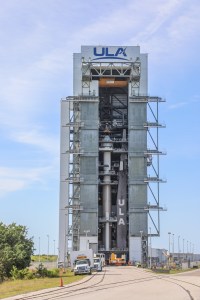
NASA concluded its Flight Test Readiness Review for the agency’s Boeing Crew Flight Test and teams are proceeding toward a planned launch at 10:34 p.m. EDT on Monday, May 6, to the International Space Station. The mission will transport NASA astronauts Butch Wilmore and Suni Williams to and from the space station of the first flight with crew to certify the Starliner and its system for regular crew rotation missions.
At 4:30 p.m., NASA will host a media teleconference (no less than one hour following completion of the readiness review) with the following participants:
- Jim Free, NASA associate administrator
- Ken Bowersox, associate administrator, NASA’s Space Operations Mission Directorate
- Steve Stich, manager, NASA’s Commercial Crew Program
- Dana Weigel, manager, NASA’s International Space Station Program
- Mark Nappi, vice president and manager, Boeing Commercial Crew Program
- Emily Nelson, NASA chief flight director
The media teleconference will air live on the agency’s website.
Next up is a mission dress rehearsal on Friday, April 26, for NASA, Boeing, and ULA (United Launch Alliance). Wilmore and Williams, commander and pilot, will mimic launch day operations. The astronauts load in their spacesuits, walk out of the Neil A. Armstrong Operations and Checkout Building, and get into Boeing’s Astrovan to travel to the spacecraft. Teams will practice countdown scenarios, prep Starliner’s crew module for flight, close the hatch, and conduct readiness polls of managers and engineers.
Wilmore and Williams are the first to launch aboard Boeing’s Starliner on an Atlas V rocket. The astronauts will spend about a week at the orbiting laboratory before the crew capsule makes a parachute and airbag-assisted landing in the southwestern United States.
After successful completion of the mission, NASA will begin the final process of certifying Starliner and its systems for crewed rotation missions to the space station. The Starliner capsule, with a diameter of 15 feet (4.56m) and the capability to steer automatically or manually, will carry four astronauts, or a mix of crew and cargo, for NASA missions to low Earth orbit.
Learn more about NASA’s Boeing Crew Flight Test by following the mission blog, the commercial crew blog, @commercial_crew on X, and commercial crew on Facebook.










